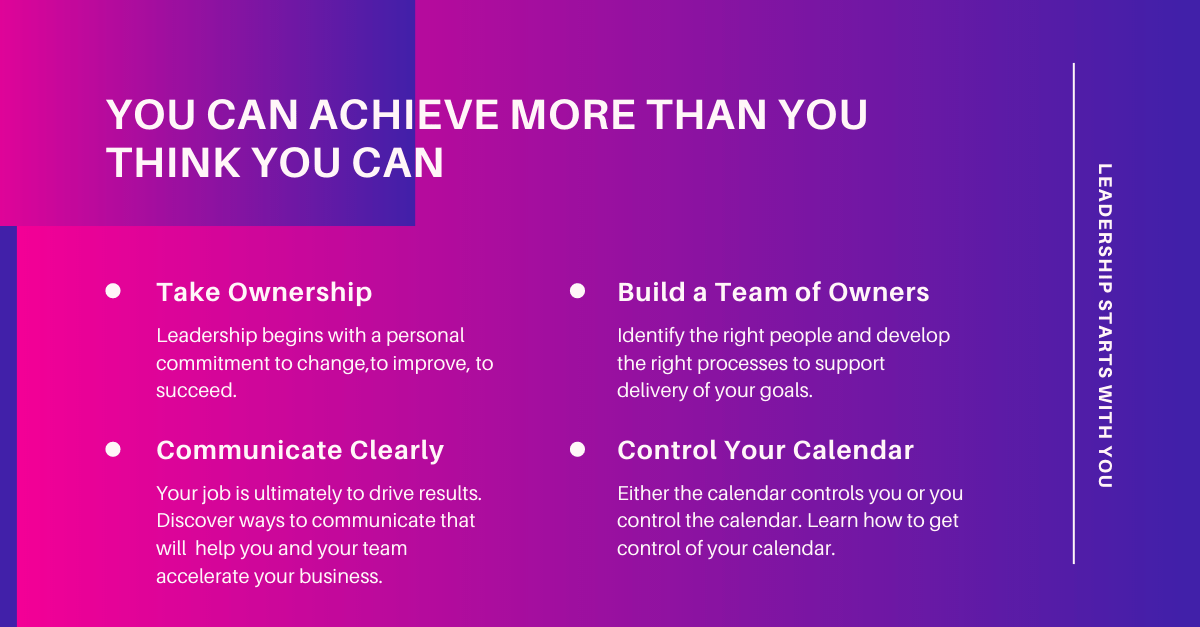As a leader, your job is ultimately to drive results. To do this, you must first set explicit goals for yourself, your team, and your business. You also must ensure that those around you are focused on the same goals. What exactly are you trying to achieve and in what time frame?
When we start working with clients, we interview members of the senior executive team about the business and ask seemingly straightforward questions:
- What is your strategy?
- What are the core metrics you use to measure results?
It is interesting to see how often each member of the team answers the questions differently.
The challenge is that the context surrounding most organizations is extremely complex. Customers, competitors, and technology are constantly changing. And organizations themselves are complex. Various functions, locations, and personalities all must come together to achieve results. A leader’s job—your job—is to make the complex simple enough to work.
We tell our clients: “Simplicity, simplicity, simplicity—and explicitness.” A leader must create a world of simplicity. The goal should be explicit.
Simplify
If you coached a track team aiming to win the 4 x 400 relay, you would look at several different factors: each runner’s interval speeds, the length of their strides, the efficiency of handoffs, etc. But the overriding goal you would communicate to the team is to improve their finish time. That’s simple. The team can look at the stopwatch and know if they’re improving or not.
It’s easy to add complexity to a system, but as with the coach, the job of a leader is to remove complexity and make the goal simple.
Be Explicit
For the track coach, the goal of finishing the race faster is simple. Setting a 4 x 400 world-record time of 2:54 is explicit. Nothing is implied. Nothing is left to the imagination. It’s easy to conduct a performance review on it.
It’s the job of the leader to make explicit that which tends to become implicit or lost in complex situations.
The concept of explicitness extends far beyond performance metrics. Effective leaders strive for it before, during, and after all their interactions with their organizations and teams. Take meetings, for instance. All too often, people leave meetings without a shared understanding of what, if anything, was decided and their responsibilities for next steps. To foster more clarity, ensure that all attendees receive an agenda before the meeting begins. Write key decisions where all participants can read them as the meeting progresses. Explicitly list the follow-up actions: what needs to happen, who needs to do it, and by when. At the next meeting, revisit the action steps.
This level of explicitness may at first feel like overkill. But your job as a leader is to ensure that everyone on your team is clear about the goals and their roles and responsibilities. Finding some simple ways to communicate more explicitly will keep everyone on the same page. Team members will begin to feel a measure of control and will start taking ownership of the goals. They will feel a sense of renewed energy and focus. Simplicity and explicitness enable a culture of performance and results.









